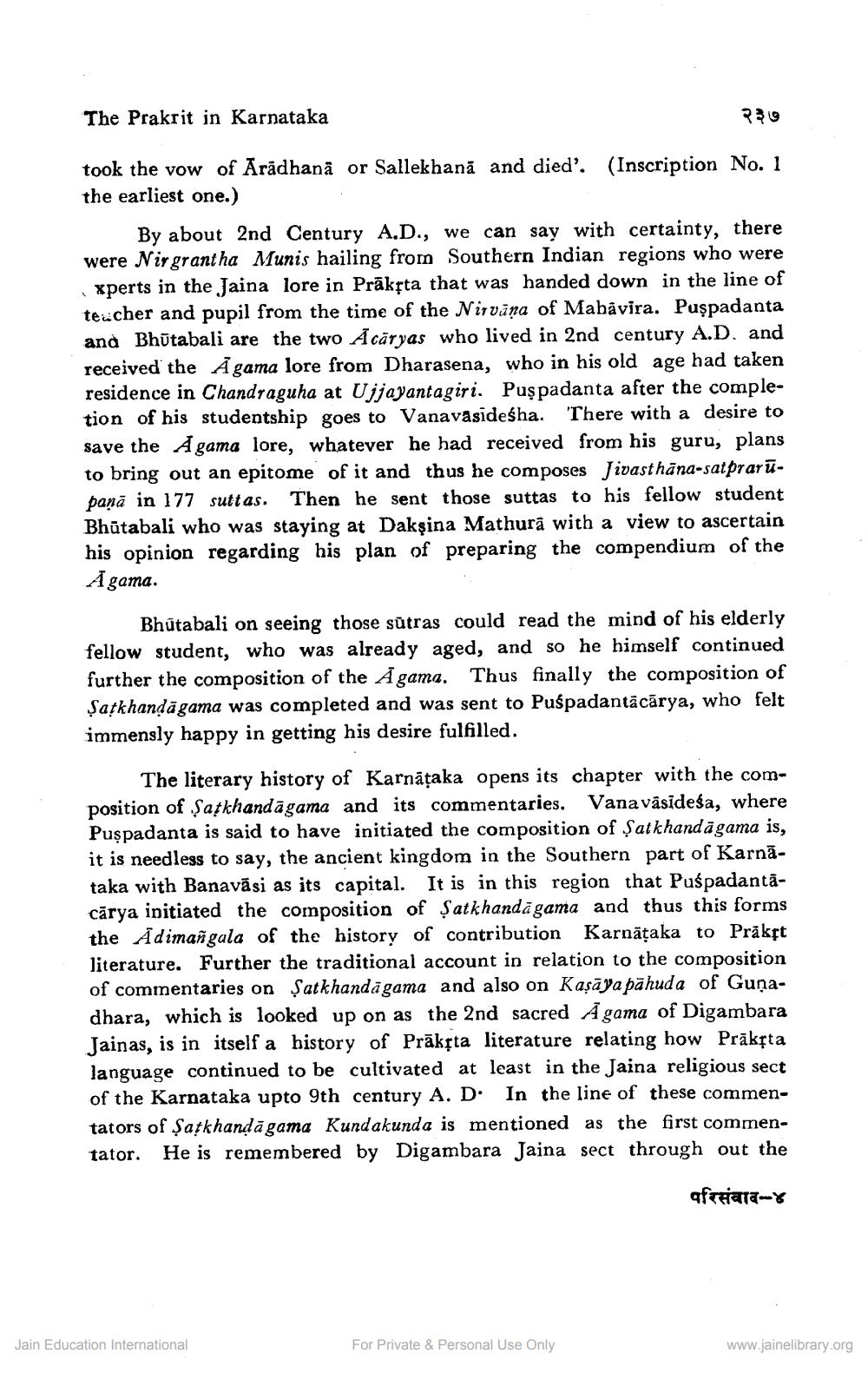Book Title: Prakrit In Karnataka Author(s): M D Vasantharaja Publisher: Z_Jain_Vidya_evam_Prakrit_014026_HR.pdf View full book textPage 2
________________ The Prakrit in Karnataka २३७ took the vow of Arādhana or Sallekhanã and died'. (Inscription No. 1 the earliest one.) By about 2nd Century A.D., we can say with certainty, there were Nir grantha Munis hailing from Southern Indian regions who were xperts in the Jaina lore in Prākrta that was handed down in the line of teacher and pupil from the time of the Nirvana of Mahavira. Puşpadanta and Bhūtabali are the two Ācāryas who lived in 2nd century A.D. and received the Agama lore from Dharasena, who in his old age had taken residence in Chandraguha at Ujjayantagiri. Puşpadanta after the completion of his studentship goes to Vanavasidesha. There with a desire to save the Agama lore, whatever he had received from his guru, plans to bring out an epitome of it and thus he composes Jivasthāna-satprarūpanā in 177 suttas. Then he sent those suttas to his fellow student Bhūtabali who was staying at Dakşina Mathura with a view to ascertain his opinion regarding his plan of preparing the compendium of the Agama. Bhūtabali on seeing those sutras could read the mind of his elderly fellow student, who was already aged, and so he himself continued further the composition of the Agama. Thus finally the composition of Șatkhandā gama was completed and was sent to Puśpadantācārya, who felt immensly happy in getting his desire fulfilled. The literary history of Karnāțaka opens its chapter with the composition of Satkhand agama and its commentaries. Vanavāsideśa, where Puşpadanta is said to have initiated the composition of Şatkhandāgama is, it is needless to say, the ancient kingdom in the Southern part of Karnataka with Banavāsi as its capital. It is in this region that Puspadantácārya initiated the composition of Şatkhandāgama and thus this forms the Adimañgala of the history of contribution Karnāțaka to Prākft literature. Further the traditional account in relation to the composition of commentaries on Șatkhandāgama and also on Kaşāya pähuda of Guņadhara, which is looked up on as the 2nd sacred Agama of Digambara Jainas, is in itself a history of Prāksta literature relating how Prāksta language continued to be cultivated at least in the Jaina religious sect of the Karnataka upto 9th century A. D. In the line of these commentators of Șatkhandā gama Kundakunda is mentioned as the first commentator. He is remembered by Digambara Jaina sect throughout the परिसंवाद-४ Jain Education International For Private & Personal Use Only www.jainelibrary.orgPage Navigation
1 2 3 4
